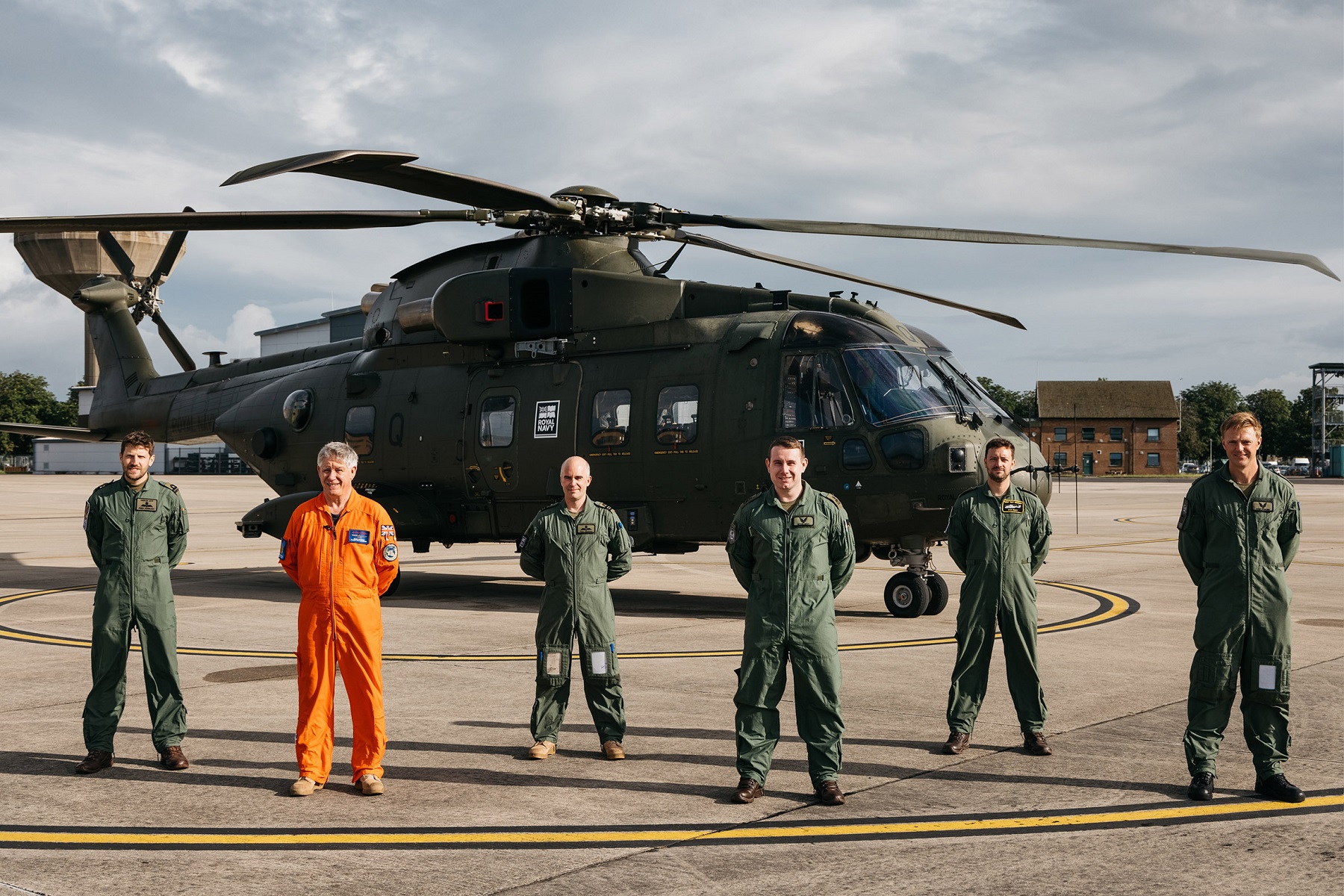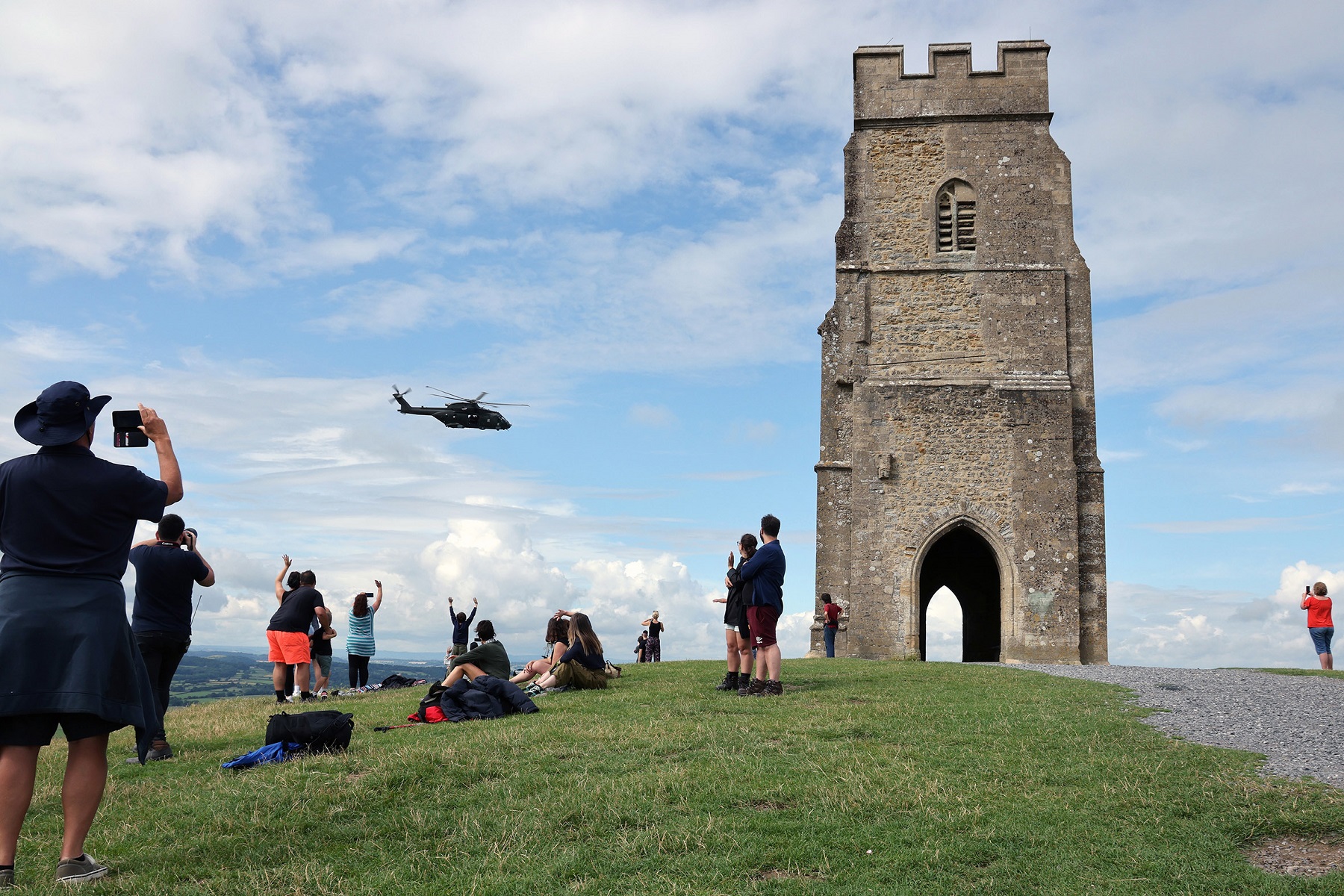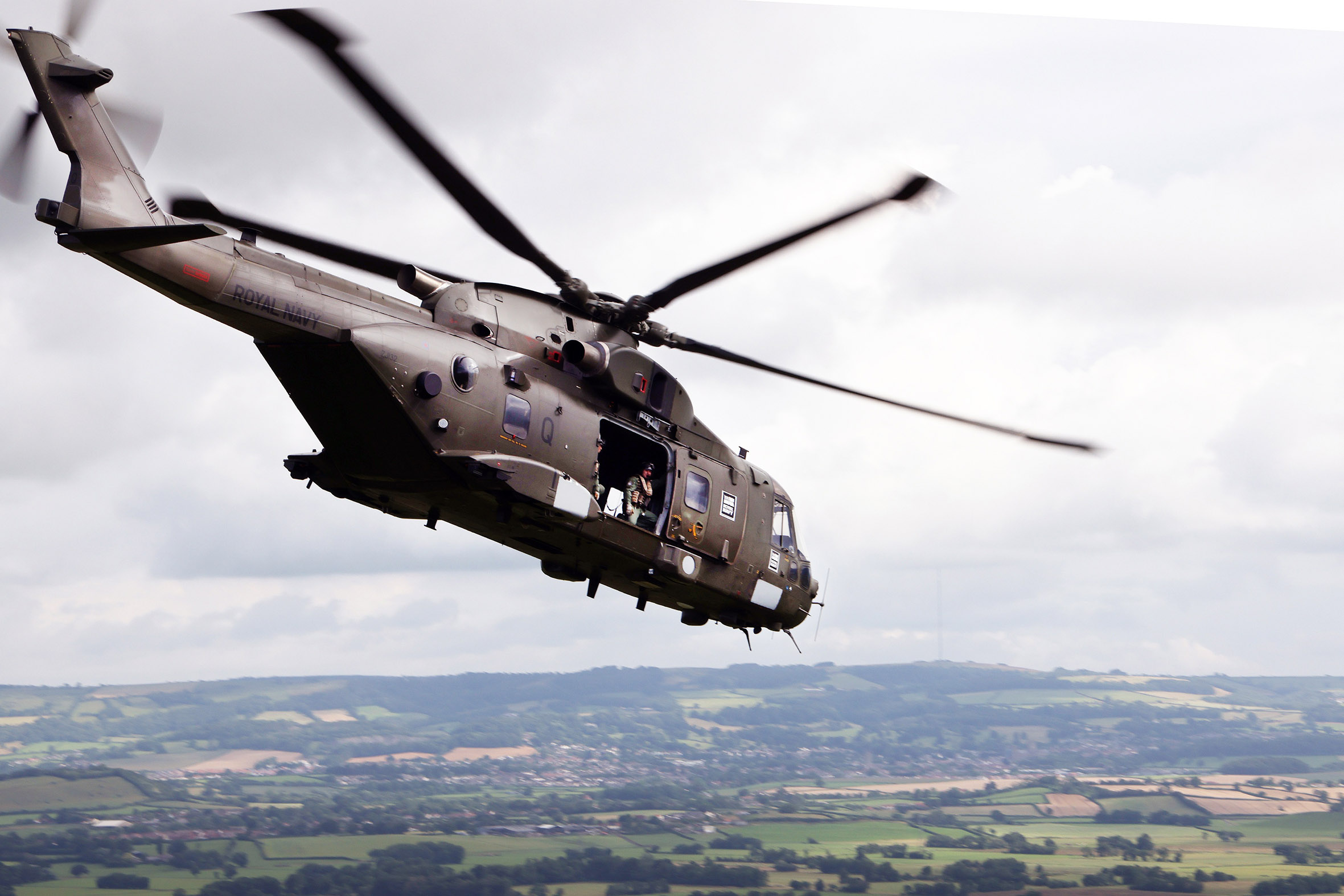A flypast of key sites – including iconic Glastonbury Tor – marked the beginning of the final phase of a decade-long programme to give the Royal Marines new wings. The last Merlin Mk3 – ZJ132, callsign Q for Quebec – flew around central and southwest England before being delivered to the Leonardo works in Yeovil to begin its metamorphosis and join her sisters as a fully-fledged Commando Merlin, able to operate more easily from Royal Navy warships at sea. Over the past ten years, the Commando Helicopter Force has upgraded its entire inventory of aircraft, replacing both the trusty Sea King and the nimble Lynx with 21st Century successors: Merlin and Wildcat.
While the Wildcat was designed and built for operations at sea from the outset, the Merlins were transferred to the Fleet Air Arm from the RAF. The battlefield Merlin is faster, has a longer range and can carry more Royal Marines into action – two dozen troops, plus kit – than the venerable Sea Kings, which were retired in 2016. But to fully support the commandos on their operations around the globe, the Merlins had to be ‘marinised’ – converted for flying at sea, including fitting folding rotor head and a folding tail boom – to fit in warship hangars; three folded Mk4s have the same footprint as one unfolded Merlin.

Quebec two-hour ‘farewell tour’ took it past Glastonbury Tor, Deptford Down on Salisbury Plain – where air and ground crew hone many of their skills – RAF Benson in Oxfordshire, home to the Merlins during their Air Force careers, then back briefly to Yeovilton, before being handed over to the folks at Leonardo. Six crew were along for the ride: aircraft captain Lieutenant Fred Durrant, pilot Lieutenant Commander Ollie Trowman, crewmen Petty Officer Lewis Meadows and Sergeant Ross Howling RM, and two flight test engineers: Petty Officer Darren Riley from the Royal Navy and Mark Hazzard from Leonardo.
When the programme is completed Commando Helicopter Force will have 18 Mk4s with folding parts as well as a fully-modernised ‘digital’ cockpit, sensors and instrumentation. It’s anticipated that the remaining seven may be ‘adapted for folding’ at a later date. The upgrade – turning the green Merlin Mk3 into the sea grey Merlin Mk4 – has proved to be both an engineering and organisational challenge as helicopters were needed for training and front-line duties… at the same time as needing revamping, demanding a concerted co-ordinated effort by CHF.

The Merlin Delivery Team from the MOD’s Defence Equipment and Support organisation and the helicopters’ manufacturers. A specialist group – the Merlin Fielding Team – was formed at the helicopters’ home in Yeovilton to oversee the complex transition: engineers, aircrew, instructors and experts. It was instrumental in ensuring that the Mk4s which emerged from the Leonardo factory were just what the two Merlin squadrons needed not just now, but for the next 20 years. At the peak of the multi-million-pound programme, as many as 15 helicopters were in various stages of conversion.
The AgustaWestland AW101 is a medium-lift helicopter in military and civil use. First flown in 1987, it was developed by a joint venture between Westland Helicopters in the United Kingdom and Agusta in Italy in response to national requirements for a modern naval utility helicopter. Several operators, including the armed forces of Britain, Denmark, and Portugal, use the name Merlin for their AW101 aircraft. It is manufactured at factories in Yeovil, England and Vergiate, Italy; licensed assembly work has also taken place in Japan and the United States. The Mk1, Mk3 and Mk3A variants can mount general purpose machine guns in up to five locations in the main cabin, aimed out of both door and window apertures. AgustaWestland has examined the integration of rockets and additional ground-attack weapons.

